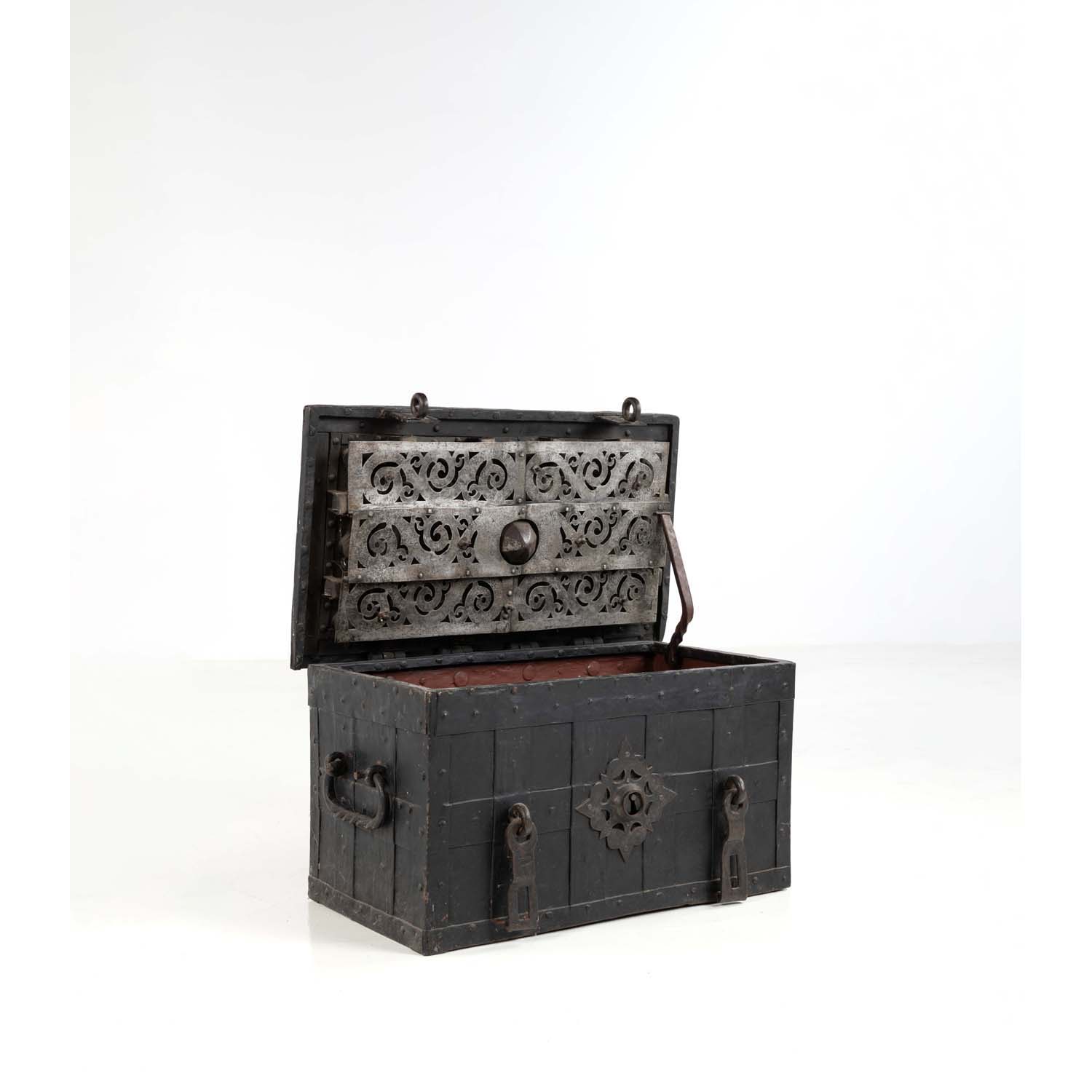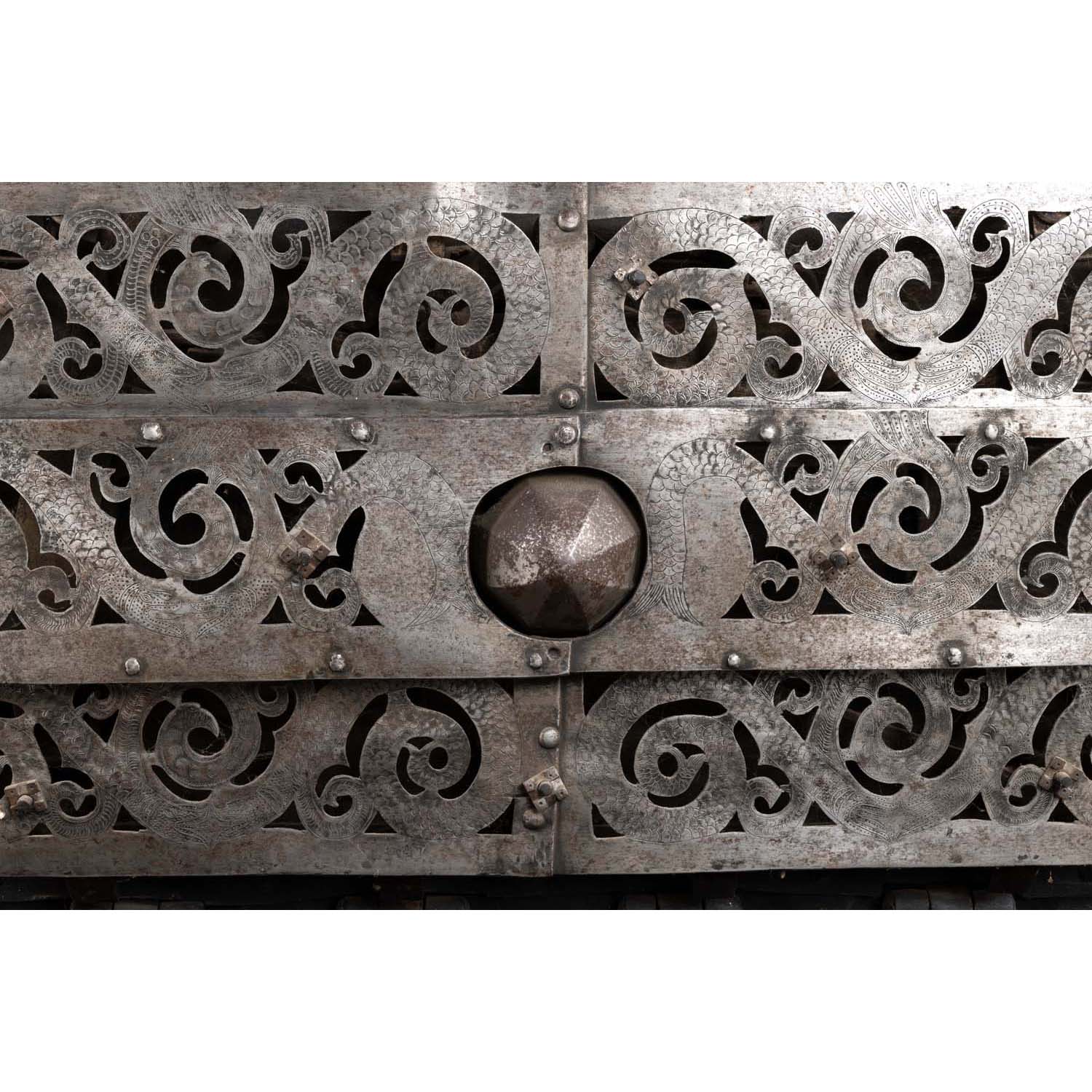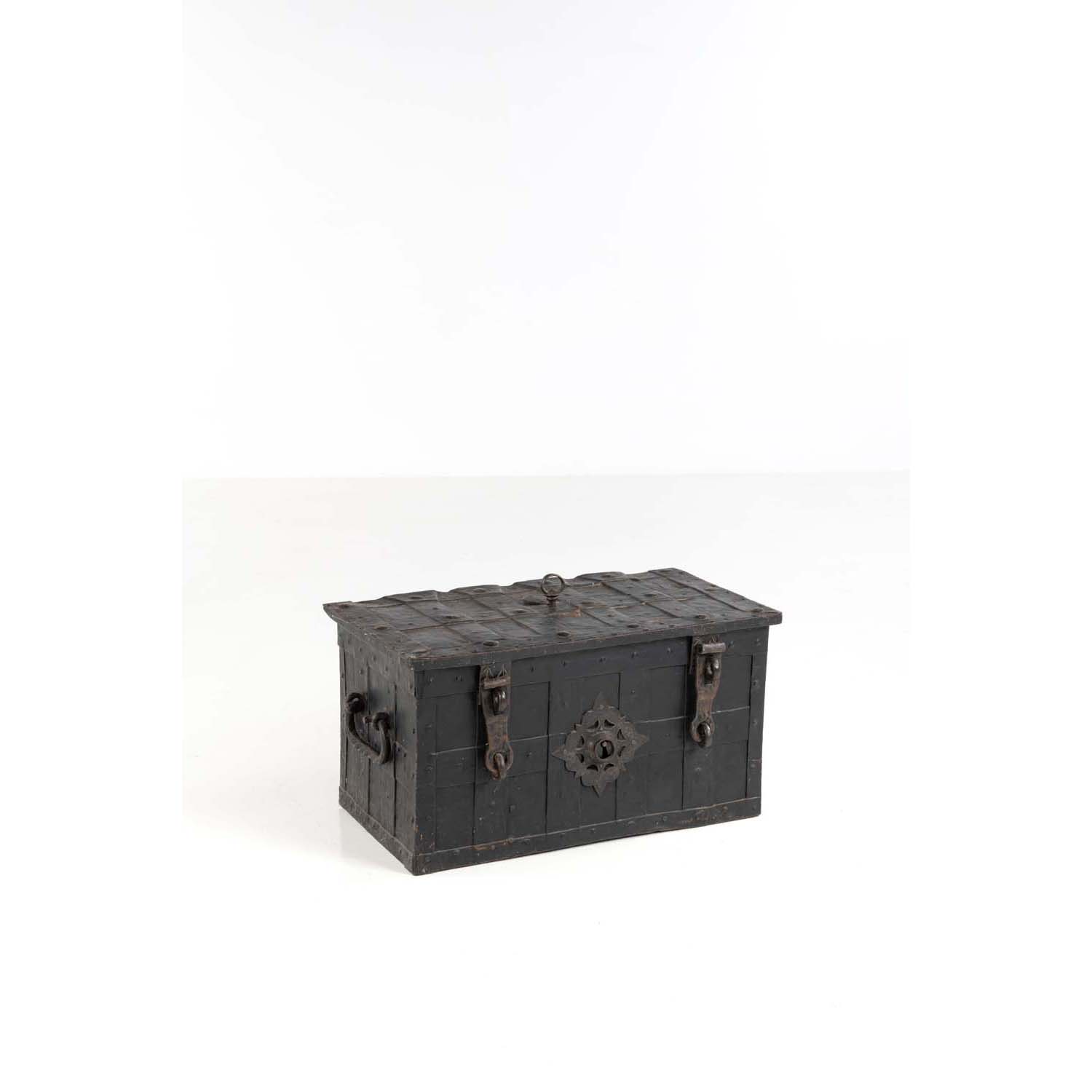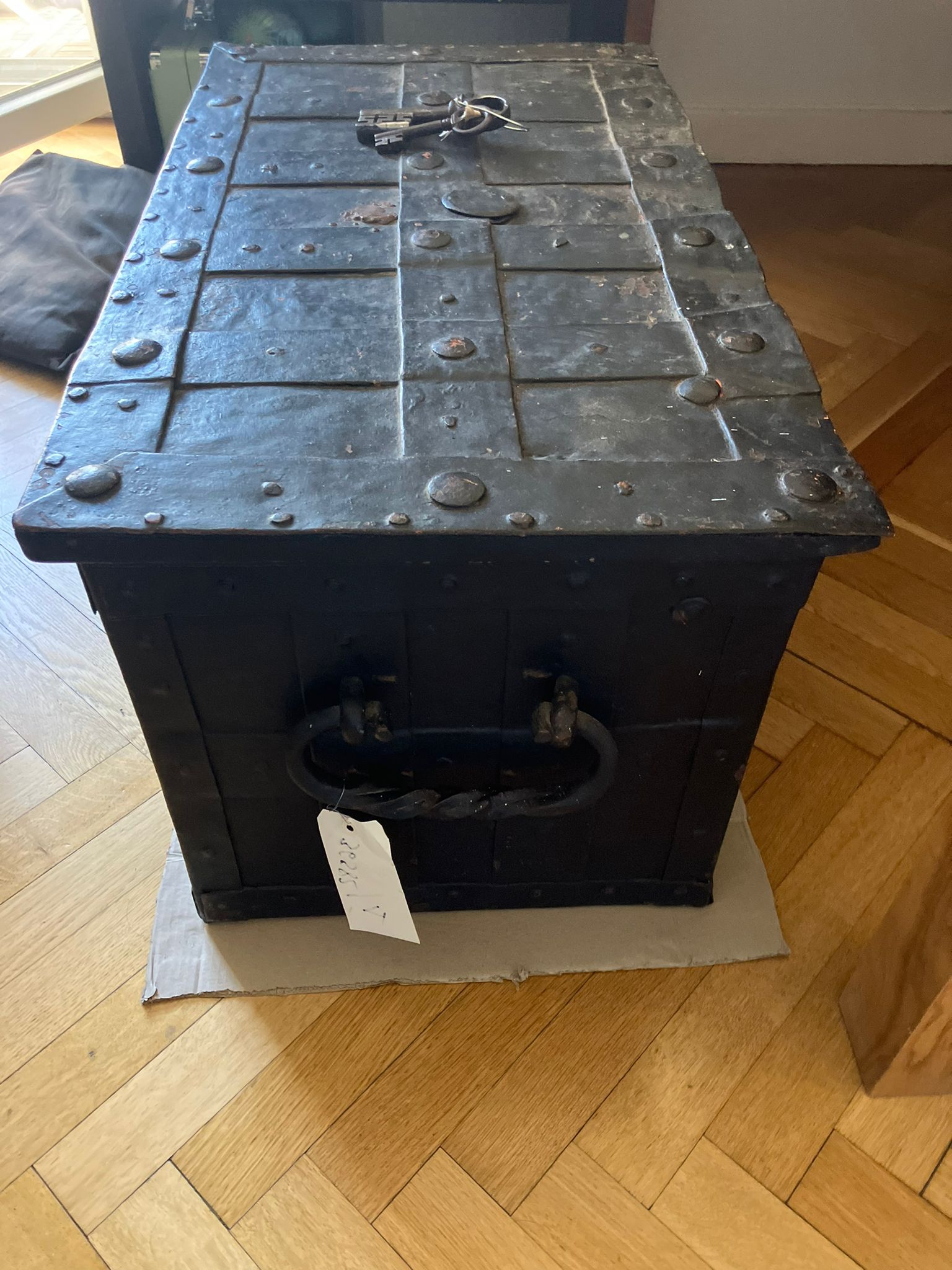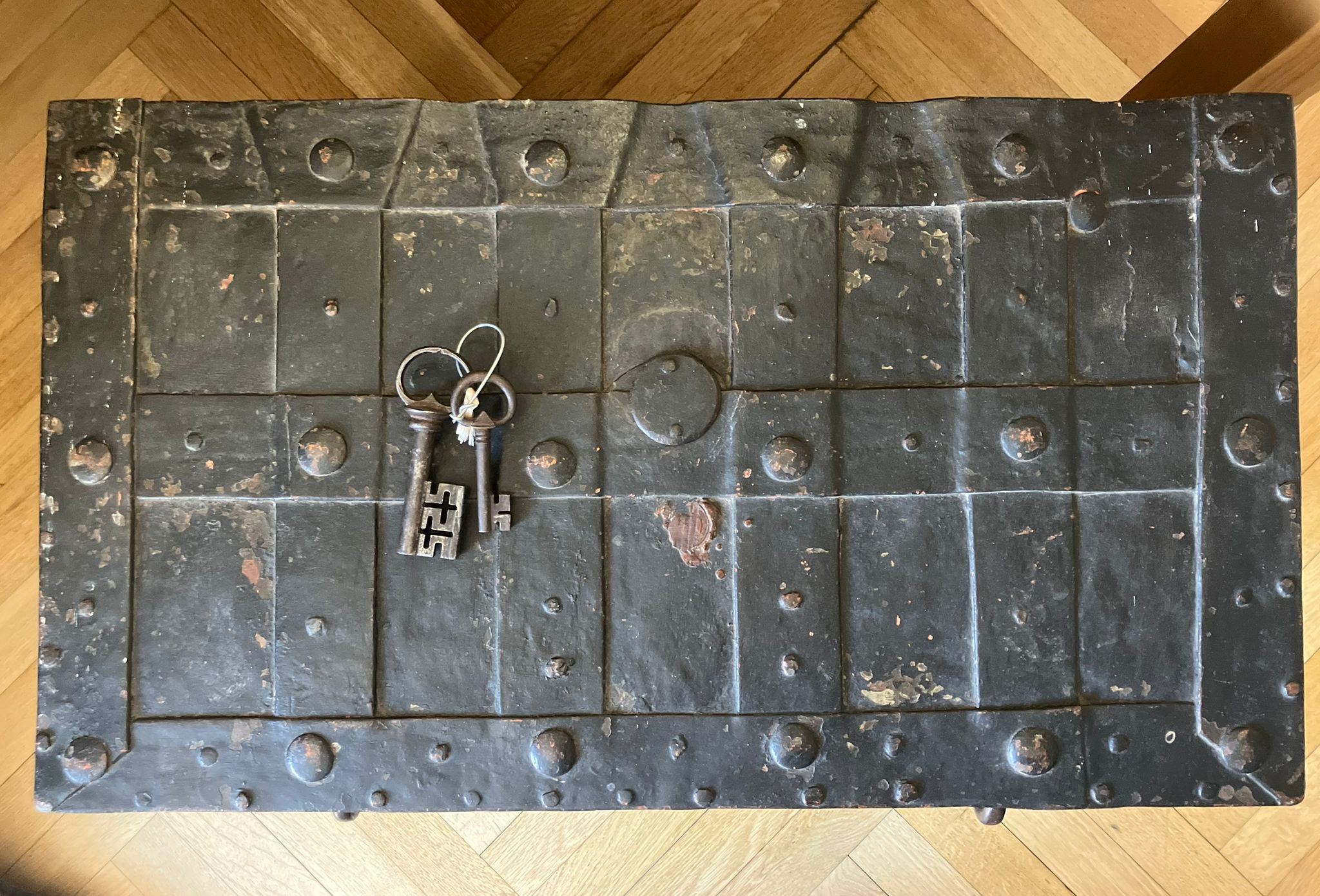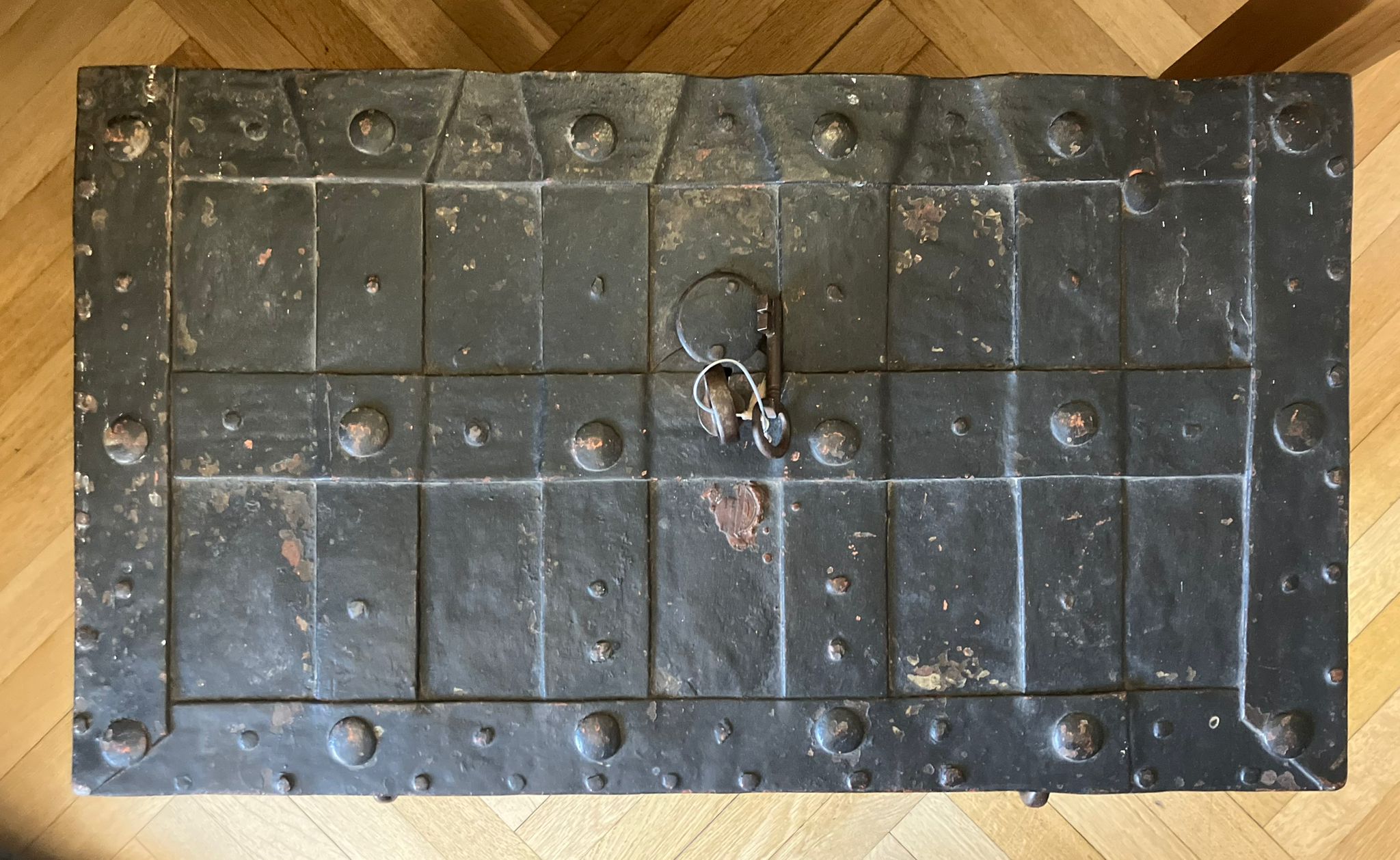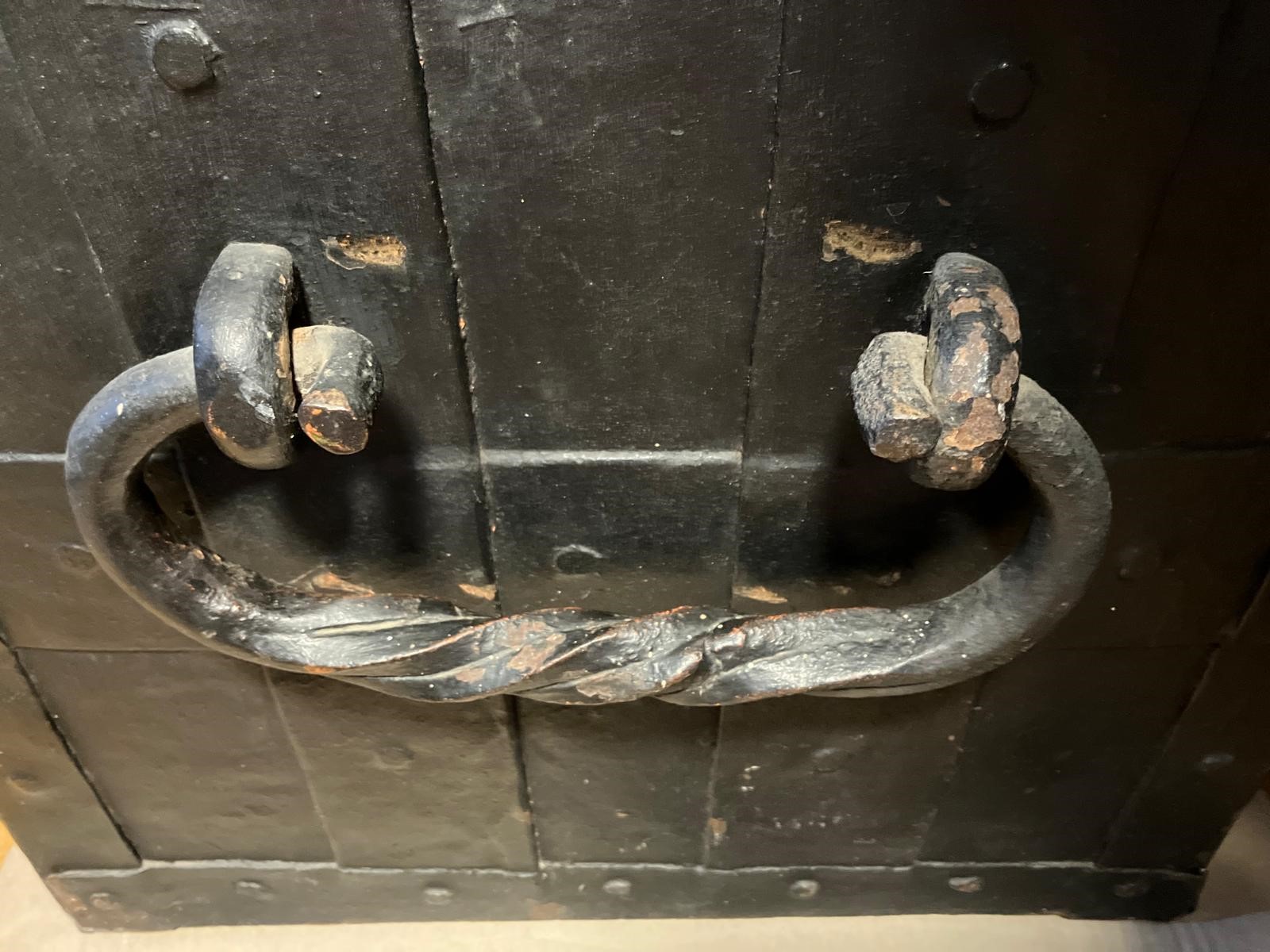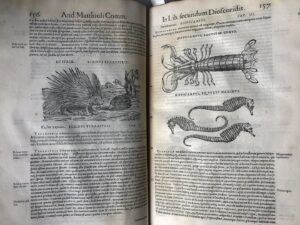Description
Nuremberg, Germany, second half of XVI – early XVII century
Dimensions: W. 84 x H. 48 x D. 45 cm, weight circa 100 kg.
Rectangular Marine chest known as Nuremberg, Armada or War chest in heavy wrought iron and riveted reinforcement straps with solid side drop handles, whose rods have been hot-fitted and are therefore unremovable. They are twisted in the middle then folded at each end in a horizontal position. This way, the handles, once lifted, lock onto the side walls, preventing carriers from getting their hands stuck. The front is decorated with a false lock and two hasps for padlocks. A rod could then be threaded thought the rings and padlocked at the end, offering additional protection.
Hinged lid, the central keyhole fitted with a spring-loaded keyhole cover. On the inside, an elaborate mechanism with twelve movable latches, concealed behind an ornamental openwork plate in chiseled metal with natural motifs, namely representing fish and birds. Another smaller lockable inner trunk welded to the metal siding. The chest is then kept open with an iron bar and this system is found on all the chests of Nuremberg. Mechanisms are fully functional with the two original keys.
Comments:

